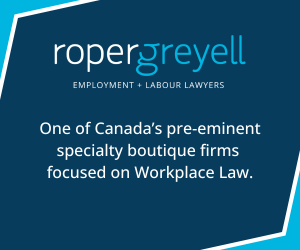The 3 Key Generators of Stress & Anxiety, and Tools to Combat Them
Get this. Stress isn’t something forced upon you, or inevitably ‘created’ by external conditions.
You create your stress by how you choose to react to events or conditions.
Few things mess with your emotions and affect your behaviour as much as stress and anxiety. Deep-rooted, long-term change comes from increasing awareness of the causes and patterns of stress – and uncovering the reasons you are resisting change.
Awareness means looking in the mirror and admitting what you see. For many people, this is a cathartic process producing great relief. For others, it is challenging to let go of the things (they think) define them, or of long-accepted patterns of behaviour.
Here Are The 3 Key Generators Of Stress:
- Stress Generator #1: Negative Perception – We all perceive things differently – not only in the sense of ‘glass half full’ or ‘glass half empty’. Often we can look at a situation or event and choose to perceive it in an exaggeratedly negative way. Similarly, we can generate stress through negative self-perception.
- Stress Generator #2: Negative Imagination – Stress and anxiety are most often the result of what we imagine will happen. The future does not yet exist in reality – it only exists in our imagination. So it is pointless and harmful to make assumptions and let negative imagination take control.
- Stress Generator #3: Bad Belief – We often create and fulfill our own prophecies. If something has happened once, we might believe the result of that event is inevitable each and every time. Event triggers belief, belief triggers behaviour. If we allow enough of these patterns to build, we allow the overriding bad belief that ‘bad things always happen to me’ to build a wall of chronic stress or anxiety around us.
Not so? Think about the following.
Two people might take exactly the same plane flight. One enjoys the experience and looks forward to what’s waiting at the other end. The other starts to stress and become anxious days – even weeks – before. Why? The anxious person is generating negative imagination, negative perception and ‘bad’ belief. Each has built a pattern of how to approach life. One is robust, the other unhealthy.
Negative perception, negative imagination and bad belief can be greatly reduced – often, very quickly. We did not come into the world with these unhealthy patterns; we built them up incrementally through our lives. These things are all of our own construction – and what has been built can be un-built.
The Tools To Handle Stress
- Breathe – Take a deep breath, filling your stomach, then release it all the way out. Do it a couple more times. Simple physiological fact: Stress produces shallow, higher breathing in the chest and an increased heart-rate. When you’re breathing deeply and steadily, you’re denying stress its place.
- Practice mindfulness – When you physically alter the areas of your brain which harbour stress, anxiety and negativity, and work on cognition, you’re denying stress and anxiety their rationale.
- Build Awareness – Use cognitive exercises to strip away negative perception and negative imagination. Get your ‘inner self’ to see things as they are.
In The Long-Term
If it were all about logic and rationality, most of us would be perfectly happy on a plane and increasingly worried about crossing the street instead. There are many programs aimed at combating stress and anxiety in their various forms work by establishing a positive emotional foundation, getting you to a place where you are ready to work on your awareness and cognition – leading, often quite quickly, to behavioural change.
The next plane ride could be your best one yet.
Mick Cassell is a qualified Clinical Hypnotherapist, CBT and NLP Practitioner and the Founder of ThinkWell-LiveWell. ThinkWell-LiveWell is a wellness platform that encourages both wellness and personal growth. Defining the second wave of the mindfulness movement, the platform offers personalized, user-centric and accessible self-development and therapy experiences. Check out Well at Work for workplace-specific tools to help employees increase resilience to stress and other workplace issues, while providing them a path to greater levels of work and life fulfillment.
For the latest HR and business articles, check out our main page.









